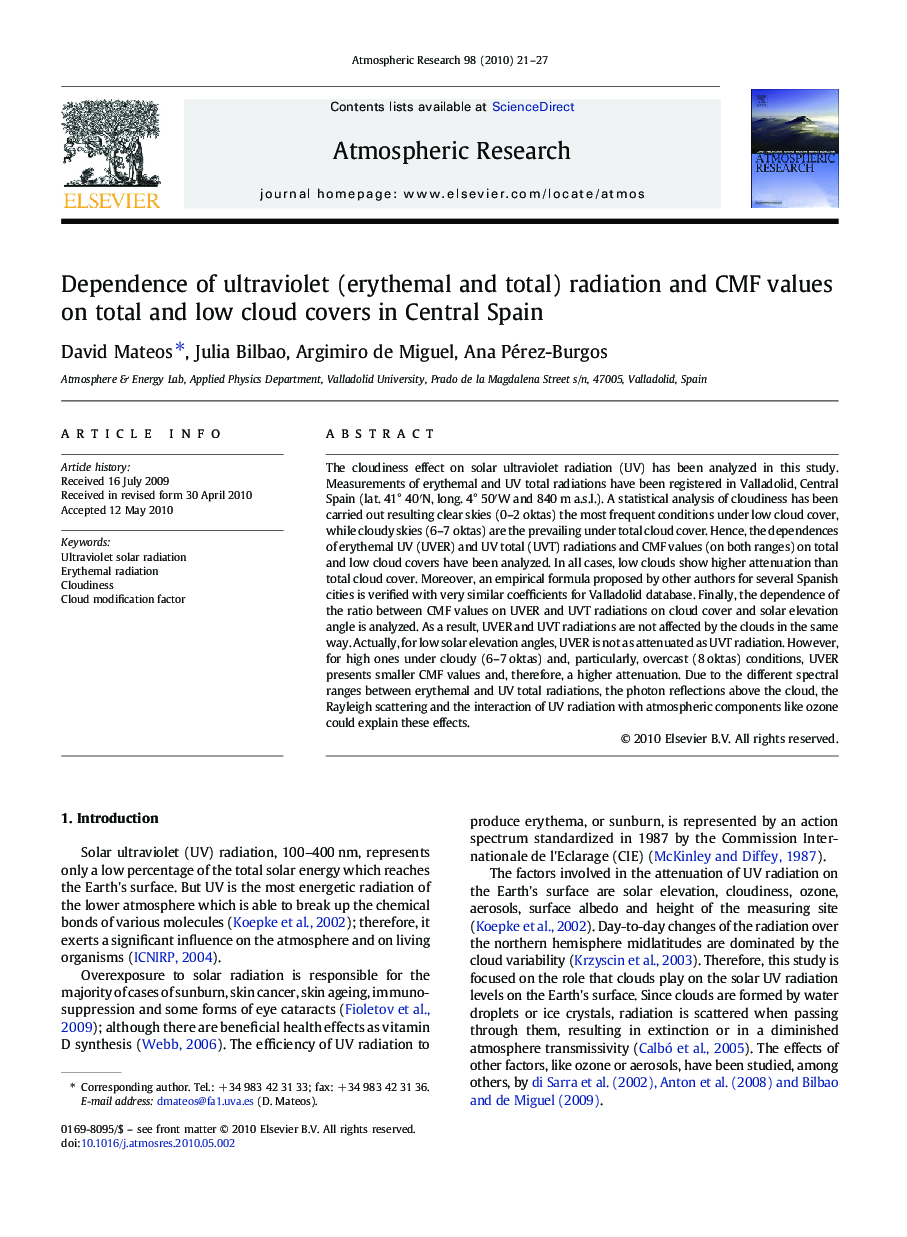| Article ID | Journal | Published Year | Pages | File Type |
|---|---|---|---|---|
| 4450570 | Atmospheric Research | 2010 | 7 Pages |
The cloudiness effect on solar ultraviolet radiation (UV) has been analyzed in this study. Measurements of erythemal and UV total radiations have been registered in Valladolid, Central Spain (lat. 41° 40′N, long. 4° 50′W and 840 m a.s.l.). A statistical analysis of cloudiness has been carried out resulting clear skies (0–2 oktas) the most frequent conditions under low cloud cover, while cloudy skies (6–7 oktas) are the prevailing under total cloud cover. Hence, the dependences of erythemal UV (UVER) and UV total (UVT) radiations and CMF values (on both ranges) on total and low cloud covers have been analyzed. In all cases, low clouds show higher attenuation than total cloud cover. Moreover, an empirical formula proposed by other authors for several Spanish cities is verified with very similar coefficients for Valladolid database. Finally, the dependence of the ratio between CMF values on UVER and UVT radiations on cloud cover and solar elevation angle is analyzed. As a result, UVER and UVT radiations are not affected by the clouds in the same way. Actually, for low solar elevation angles, UVER is not as attenuated as UVT radiation. However, for high ones under cloudy (6–7 oktas) and, particularly, overcast (8 oktas) conditions, UVER presents smaller CMF values and, therefore, a higher attenuation. Due to the different spectral ranges between erythemal and UV total radiations, the photon reflections above the cloud, the Rayleigh scattering and the interaction of UV radiation with atmospheric components like ozone could explain these effects.
